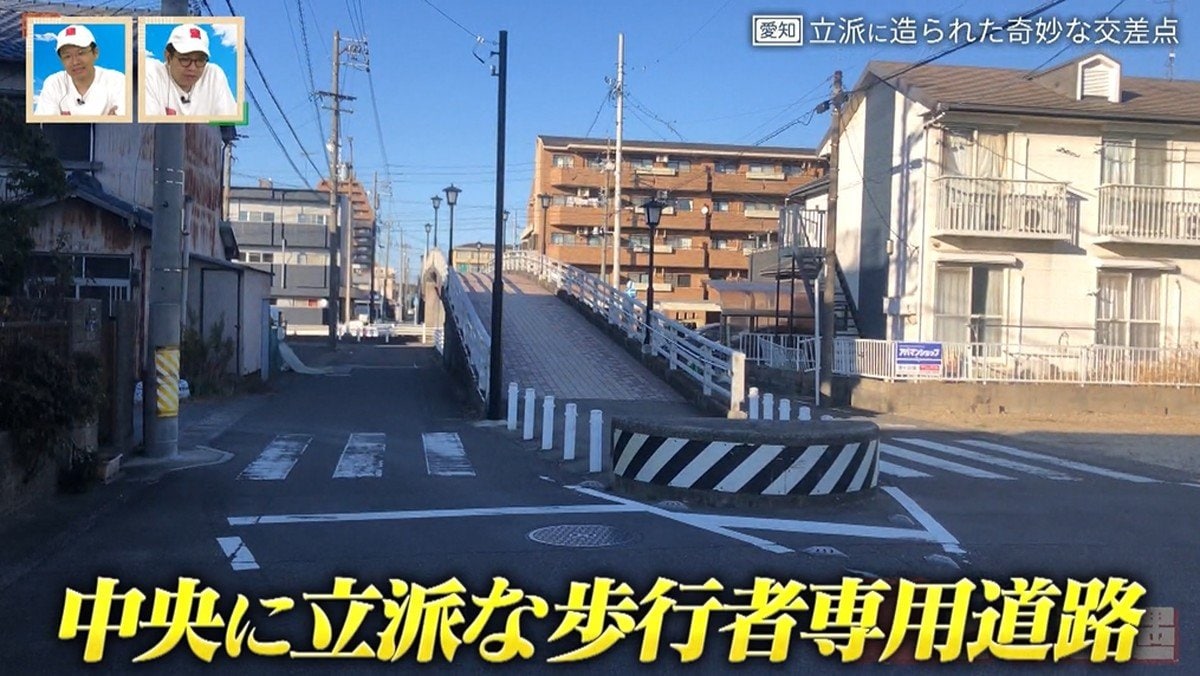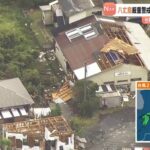A variety program specializing in roads across Japan, ‘Encounter with Roads,’ features road enthusiasts introducing their recommended roads. This time, we explored “strange intersections” located in Aichi Prefecture.
Why is there a 6-way intersection in the middle of a settlement!? A strange intersection where roads intersect chaotically
In the settlement of Yaai-cho, Inazawa City, Aichi Prefecture, strange intersections are scattered throughout. Despite being a small settlement, there are intersections where three roads intersect unnaturally, and there is even a 6-way intersection where six roads meet.
It becomes clear when looking at a map. Unlike the surrounding area, which is laid out in a grid pattern, only Yaai-cho has roads intersecting chaotically, creating a concentration of strange intersections.
The intersections are extremely close to each other, and Jizo statues are placed everywhere. Due to the uniquely shaped, irregular intersections, small triangular spaces exist in the unnaturally created gaps.
Yaai-cho has long been known for its deep religious faith, and the Yaai Kannon, enshrined by the lord of the former Yaai Castle, Hashimoto Daizen, still remains.
In this region, Kannon worship is so deeply rooted that 43 Jizo statues are enshrined throughout the area, following the example of Japan’s oldest pilgrimage route, the “Saigoku Thirty-three Kannon Pilgrimage.” It is said that because the Jizo statues were central to people’s lives, roads gradually converged toward them, resulting in the current chaotic road network.
Yaai-cho
I am unable to find any specific historical or cultural information on a place called “Yaai-cho.” It is possible that the name may be misspelled or refer to a very localized area that is not widely documented in English sources. For an accurate summary, please verify the spelling or provide additional context.
Inazawa City
Inazawa City is a municipality in Aichi Prefecture, Japan, with a history dating back to ancient times. It is notably the site of the Battle of Okehazama in 1560, where Oda Nobunaga achieved a legendary victory that was a pivotal moment in Japanese history. Today, the city preserves this history through cultural sites like the Okehazama Battlefield and continues its traditional textile and ceramic industries.
Aichi Prefecture
Aichi Prefecture, located in central Japan, is a major industrial and cultural hub historically known as the home of the powerful Owari and Mikawa samurai clans. It is most famous for Nagoya Castle, built in the early 17th century by the shogun Tokugawa Ieyasu, a native of the region. Today, Aichi is a modern economic powerhouse, home to the Toyota Motor Corporation and host of the 2005 World Expo.
Jizo statues
Jizo statues are stone Buddhist deities revered as protectors of travelers, children, and the souls of deceased infants in Japan. They are often found along roadsides and in temples, dressed in red bibs and hats as offerings. This tradition dates back centuries, originating from the bodhisattva Jizo’s vow to aid all beings, especially the most vulnerable.
Yaai Kannon
Yaai Kannon is a Buddhist temple located in the city of Yaizu, Shizuoka Prefecture, Japan. It is dedicated to Kannon, the Bodhisattva of Compassion, and is known for its large, modern statue of the deity. The temple serves as a place of worship and a local landmark, though its specific founding history is less documented compared to more ancient Japanese temples.
Yaai Castle
I am unable to find any historical or cultural information on a place called “Yaai Castle.” It is possible the name may be misspelled or it could be a very localized or lesser-known site. For an accurate summary, please verify the correct name or provide additional context.
Hashimoto Daizen
I am unable to find any significant historical or cultural information about a place or site named “Hashimoto Daizen.” It is possible that the name may be misspelled, refer to a very local or obscure location, or be a personal name rather than a public site. For an accurate summary, please verify the correct spelling or provide additional context.
Saigoku Thirty-three Kannon Pilgrimage
The Saigoku Thirty-three Kannon Pilgrimage is a famous 1,000-kilometer circuit in the Kansai region of Japan, visiting 33 Buddhist temples dedicated to the bodhisattva Kannon. Established in the 11th century during the Heian period, it is Japan’s oldest and most renowned pilgrimage route, created to allow devotees to experience the divine presence of Kannon in multiple forms across western Japan.






